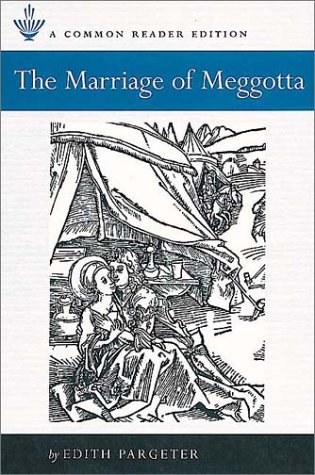The Marriage of Meggotta
The reputation of Ellis Peters as author of the Brother Cadfael series has eclipsed that of Edith Pargeter, her real name, under which she wrote historical novels such as this reissued story of an arranged marriage in 1230s England. Henry III arranges for a wealthy fatherless heir to marry the daughter of the king’s justiciar, Hubert de Burgh. After changes in political fortunes, the treacherous king cancels his plans for the two children, but the true story of their resistance to Henry’s efforts forms the basis of the novel.
The main action of the story is more or less grounded in authentic history, but the political conflicts between the barons and the king are reduced to matters of personal pique. Terms from areas like medieval law (fee for estate) and hawking (mews) are sprinkled throughout the text, frequent enough to add an air of authenticity without the loss of intelligibility to the modern reader. “Hair and beard had grown long and showed ash-grey where before they had been only salted with silver” is an example of how she traces the misfortunes of the heroine’s father until his hair becomes “deadly lustreless white.”
Marriage of Meggotta is historical fiction teetering on the edge of romance, saved from falling over by the inescapable facts of the underlying history. Appearances by historical characters include Simon de Montfort courting the king’s widowed sister and a cast of bishops and justiciars. The struggle in the aftermath of the Magna Carta forms the background, but the plight of the childhood sweethearts drives government and politics off the stage for the majority of the book.










